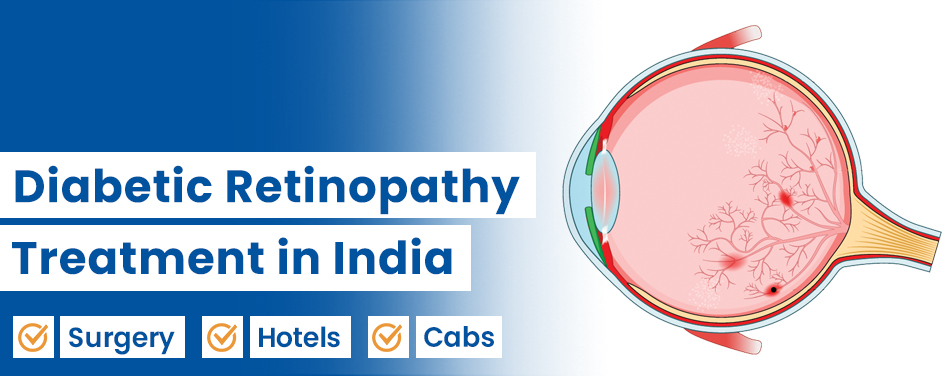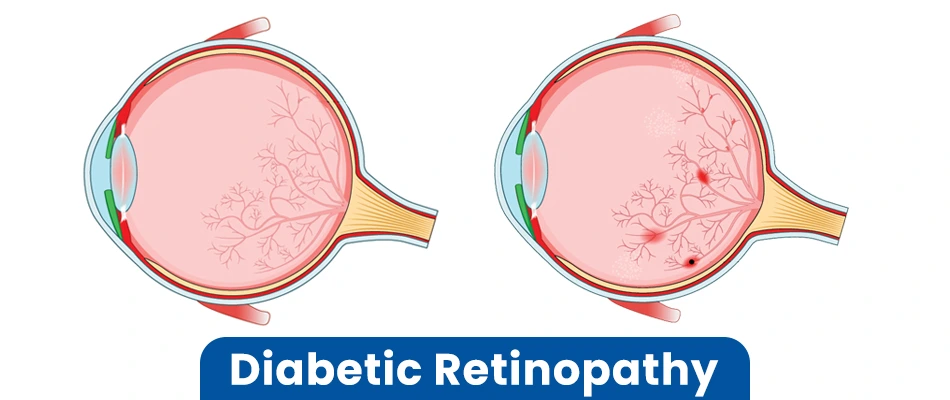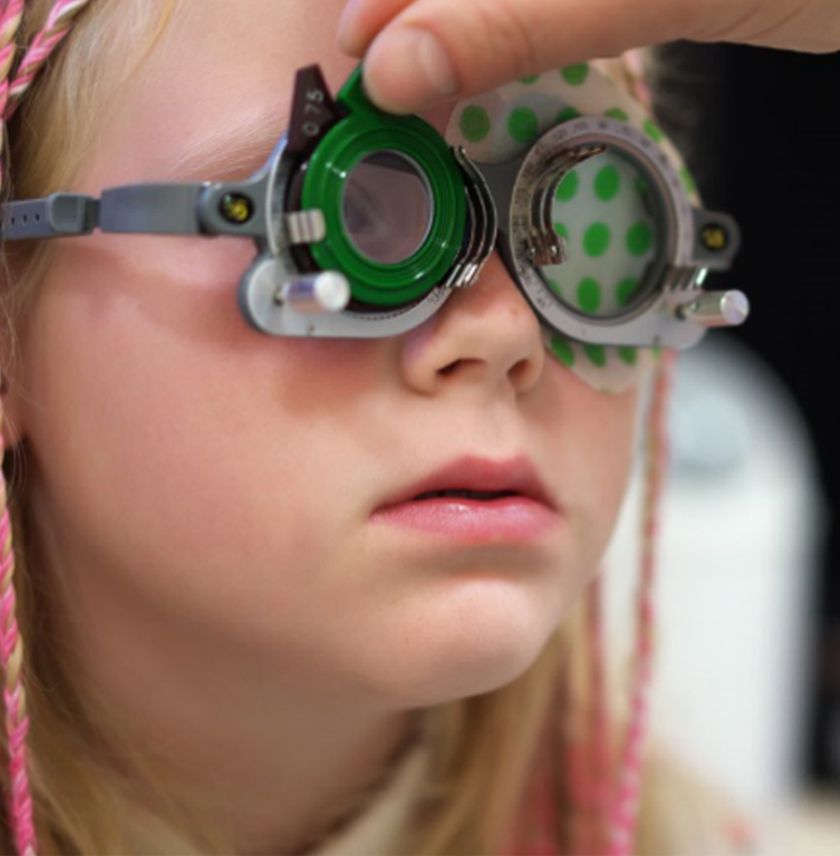

Diabetic retinopathy is a complication of diabetes that affects the eyes. It occurs when the blood vessels in the light-sensitive tissue at the back of the eye, known as the retina, are damaged. In its early stages, diabetic retinopathy often causes no symptoms and sometimes only results in mild vision problems.
This condition is relatively common in Africa. According to recent population-based reports, the prevalence of diabetic retinopathy in Africa ranges from 30.2% to 31.6%. Countries such as Kenya, Congo, Uganda, Nigeria, and others report a significant number of these disease-related cases.
However, many retinopathy patients in Africa seek treatment abroad due to the limited availability of advanced diabetic retinopathy care within the continent. Even when high-quality treatment is accessible locally, it is often very expensive with long waiting times.
On the other hand, when you opt for countries like India, you can get the most advanced diabetic retinopathy treatment and care at the most cost-effective prices. Patients can benefit from state-of-the-art hospital infrastructure, experienced surgeons, and comprehensive medical support teams, all at a fraction of the cost compared to many other regions.
There are a number of diabetic retinopathy treatment options, ranging from surgery to medications, depending on the severity of the condition. Diabetes and eyes are closely related, as the disease has a direct impact on eye health, and one of the primary causes of diabetic retinopathy is prolonged elevated blood sugar levels.

Over time, high blood sugar damages the small blood vessels that nourish the retina. This damage blocks blood flow and affects the retina's normal function. In response, the retina may attempt to compensate by growing new blood vessels. However, due to continued high sugar levels, these new vessels are often abnormal and fragile. They tend to leak easily, leading to vision problems such as blurry eye diabetes or diabetic retinopathy, which are the hallmark symptoms of diabetic retinopathy.
Surgical intervention is usually considered when vision is severely affected or when the condition progresses to more advanced stages. This includes situations where there is:
Some other eye conditions that also require similar surgical treatments include:
In addition to diabetes itself, several risk factors increase the likelihood of developing severe retinopathy that may require surgery, including:
Diabetic retinopathy has become quite common worldwide, especially on the African continent. But before you find the best doctor for diabetic retinopathy disease in India, you need to be aware of the different types of diabetic retinopathy and their different treatment methods.
The term type of diabetic retinopathy refers to the stage of the disease. There are primarily two stages of diabetic retinopathy, which are
■ Non-proliferative Retinopathy
This is the early stage of diabetic retinopathy. In NPDR, the blood vessels in the retina swell and leak fluid or blood. One of the most common complications at this stage is macular oedema, which is the swelling of the macula that is at the central part of the retina responsible for sharp vision.
■ Proliferative Retinopathy
This is the more advanced stage of the disease. In PDR, new, abnormal blood vessels begin to grow on the surface of the retina and into the vitreous. These fragile vessels often bleed and lead to vision loss and other serious complications. Immediate treatment is usually required at this stage.
Diabetic retinopathy treatment depends on the stage and severity of the disease, as well as the symptoms experienced. There are primarily three ways doctors treat diabetic retinopathy disease. This includes injecting drugs in the retina (such as Anti-VEGF, Eylea, Lucentis, etc.), Scatter Laser surgery and Vitrectomy.

■ Injections / Anti-VEGF Therapy:
In this method, drugs such as Eylea, Lucentis, and other anti-VEGF medications are injected into the eye to reduce swelling, prevent the growth of abnormal blood vessels, and improve vision.
■ Scatter Laser Surgery / Panretinal Photocoagulation:
Scatter laser surgery is a minimally invasive procedure that uses lasers to seal or shrink leaking blood vessels and prevent the growth of new ones. It is especially effective in managing hypersensitive retinopathy and macular oedema
■ Vitrectomy:
Vitrectomy is a surgical procedure that is used in advanced cases of diabetic retinopathy. It helps to clear vision, reduce the risk of retinal detachment, and restore retinal structure. It involves removing the vitreous gel and any blood or scar tissue from the back of the eye. There are two common types of this disease:
When looking to get your treatment from the best hospital for retina diabetes treatment in India, you must have a clear idea about the surgical procedure you are going to go through, particularly vitrectomy, which is the most common surgery for advanced diabetic retinopathy.
Vitrectomy is performed to remove the vitreous gel and any blood that has leaked into the eye cavity, helping to restore clear vision and prevent further retinal damage.
Vitrectomy Surgery Procedure:
The diabetic retinopathy treatment may take you 2-3 weeks to recover completely. During this period you will need proper aftercare, which will ensure a faster recovery and increase your surgery success rates. Proper aftercare is just as important as the surgery itself. Make sure to attend all follow-up appointments and consult your eye specialist if you experience unusual pain, sudden vision changes, or signs of infection.
Here are some common diabetic retinopathy disease treatment aftercare tips:
Diabetic retinopathy refers to diabetes affecting the eyes. The recovery time after surgery depends on the type and severity of the procedure performed. Scatter laser surgery for Doctors perform diabetic retinopathy in the earlier stages of the disease. Recovery time for scatter laser surgery usually ranges from around 2 to 4 weeks. Most patients can return to normal activities relatively quickly, though temporary blurry vision and light sensitivity are common during this period. Vitrectomy, on the other hand, is a more complex procedure, which is generally recommended in the advanced stages of diabetic retinopathy when other treatments fail to work. Recovery from vitrectomy takes around 3 to 6 weeks, depending on the patient’s health, the extent of the surgery, and how well the post-operative care is followed after the retinopathy surgery.
There are various options for retina diabetes treatment. However, if medications and therapies fail to provide results, surgery is the only and the best treatment option remaining. The cost of diabetic retinopathy surgery in India can vary depending on a number of factors, such as the type of surgery, your healthcare provider, and the hospital you choose. With CureIndia, you can get your diabetic retinopathy surgery at the best hospitals by highly experienced doctors at really affordable costs. Below is the diabetic retinopathy surgery cost in India along with the stay period if you get it done with CureIndia:
Diabetic retinopathy is considered a serious health condition. The treatment of diabetic retinopathy is also necessary. That is why most health insurance policies and mediclaim policies in India cover the disease. However, various health insurance policies offer distinct terms, conditions, and coverage plans. Some policies may provide full coverage, including coverage for related charges associated with diabetic retinopathy disease. In contrast, some policies may provide only partial coverage for the treatment of diabetic retinopathy. For more clarity about diabetic retinopathy surgery coverage, you shoulconsultth your respective healthcare and insurance provider.


Get the Eye color you've always dreamed of
Connect Today
Opt for successful eye color change surgery
Plan Surgery
Remove glasses with SMILE LASIK
Get Cost